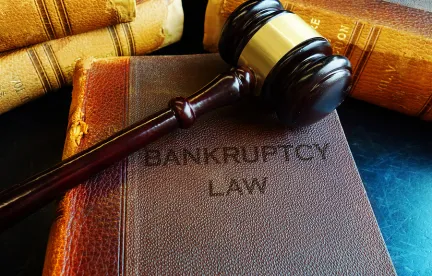The Ninth Circuit on June 1 affirmed a key bankruptcy principle that liens may survive and “pass through” the bankruptcy process even if the underlying claim secured by the lien is disallowed. The facts in Lane v. The Bank of New York Mellon (Ninth Cir. Ct. Of Appeals, No. 18-60059, June 1, 2020) are all too familiar – a mortgage loan originated by Countrywide Home Loans wound up in a huge pool of securities with The Bank of New York Mellon serving as trustee for the certificate holders. Countrywide had endorsed the promissory note in blank, which made it payable to the bearer.
Richard Lane filed a Chapter 13 in 2011, listing Bank of America Home Loans as a secured creditor, but noting that he disputed the “real party in interest.” The Bank of New York Mellon filed a proof of claim and objected to the plan. Lane objected to the claim, arguing that the Bank failed to prove legal standing and failed to prove ownership of the note. The Bank’s lawyer failed to timely respond and a default order was entered to disallow the claim in its entirety. Lane subsequently filed an adversary complaint to declare the mortgage lien to be void under 11 U.S.C. 506(d) which, with some exceptions, provides that liens securing a disallowed claim are void. The Bankruptcy Court granted the debtor’s motion for summary judgment, voided the mortgage lien and awarded attorney fees to the debtor under Cal. Civ. Code 1717.
Upon appeal to the Ninth Circuit’s Bankruptcy Appellate Pane, the BAP reversed. The BAP reasoned that, if a claim is disallowed because the claimant fails to prove ownership of the loan, that implies that someone else owns the claim. Since that other person did not receive notice, the Bankruptcy Court’s decision to void the lien violates due process.
The debtor then appealed to the Ninth Circuit, which thoroughly analyzed how a secured creditor can approach a bankruptcy. It notes that a secured creditor can enforce a claim against the debtor personally (“in personam”) or against the collateral (“in rem”). In other words, it need not participate in the bankruptcy at all, even though the personal claim for money will be discharged, citing the 1886 case of Long v. Bullard and the 1992 case of Dewsnup v. Timm, both United States Supreme Court cases.
The Ninth Circuit then discussed the disallowance and lien voiding language of 11 U.S.C. section 506 by citing that provision’s saving language for claims that are not allowed “due only to the failure to file a proof of claim.” Of course, in this case, the Bank did file a claim, which complicated the exception, but the Ninth Circuit easily concluded that, “Yes, BONY filed a proof of claim, but the [bankruptcy] court found that BONY was not the real party in interest, and therefore BONY’s proof of claim must be disregarded for purposes of applying section 506(d).” In doing so, the Ninth Circuit disagreed with the BAP’s finding that due process was violated; the Ninth Circuit notes that “in the real world,” the Bank probably was the real party in interest and thus did receive the requisite due process notice. However, the Bank simply failed to prove ownership and thus the bankruptcy court was required to conclude that the claim must be disallowed.
Fortunately for the investors in the huge, sometimes poorly documented mortgage pools created before the Great Recession, the Supreme Court concluded in 1886 that liens can pass through bankruptcy even if the related claim is disallowed, and fortunately 11 U.S.C. section 506 recognized exceptions to its disallowance provisions. The Lane v. Bank of New York Mellon case provides a useful primer on the how the bankruptcy claims process is intended to function and perhaps how to avoid the problems created by less than optimal documentation of secured loans.



 />i
/>i

